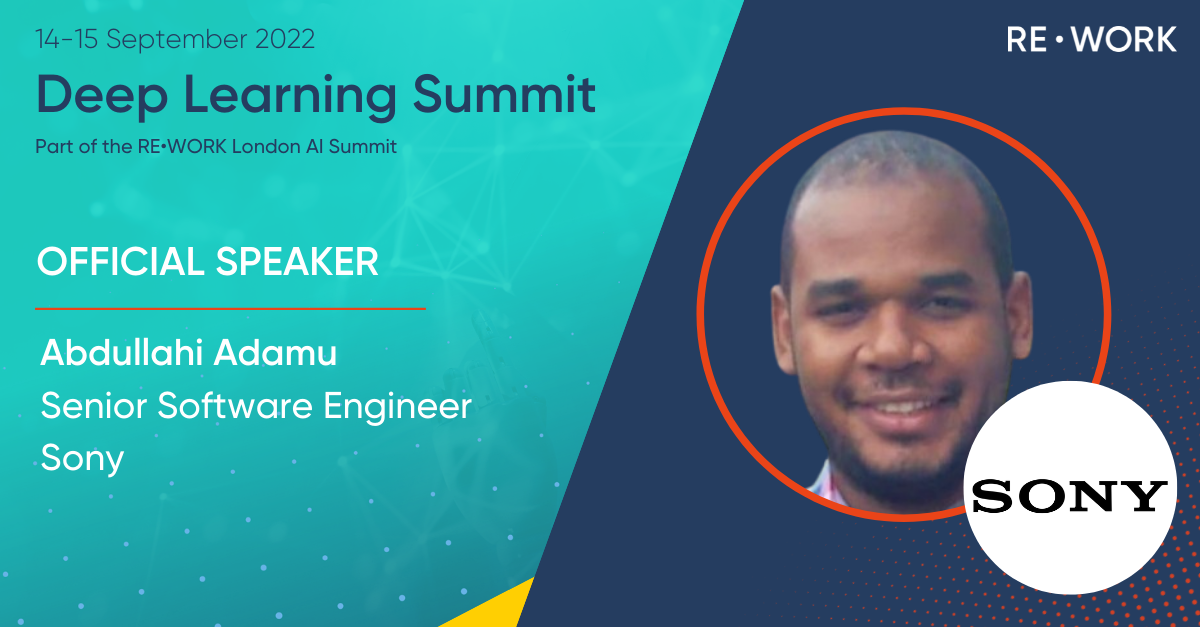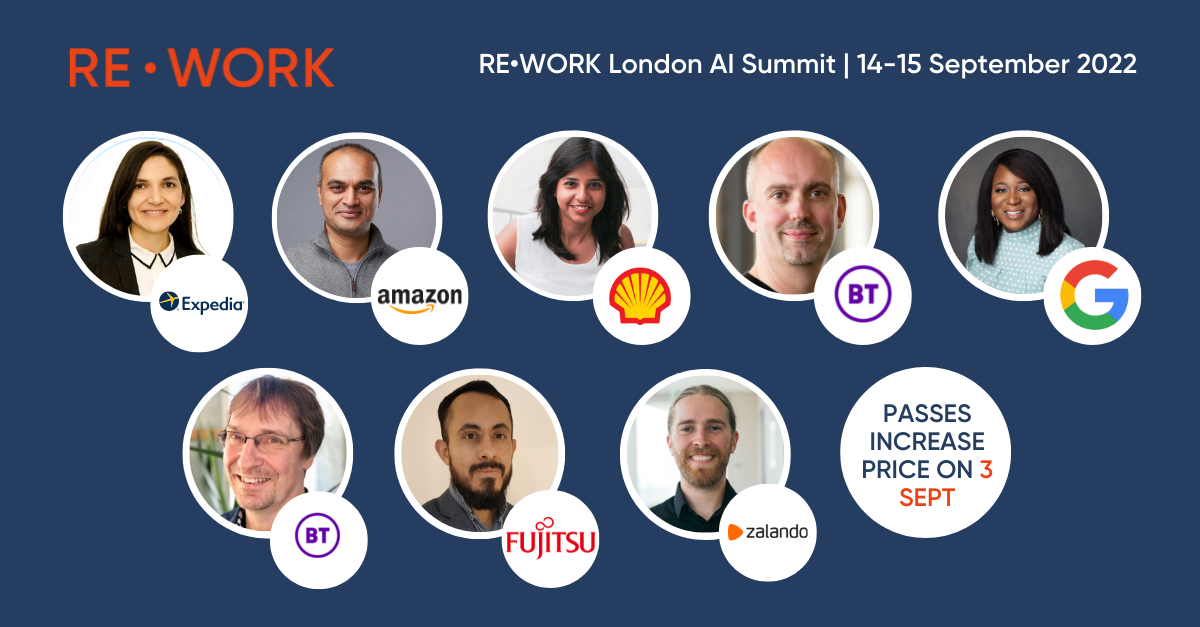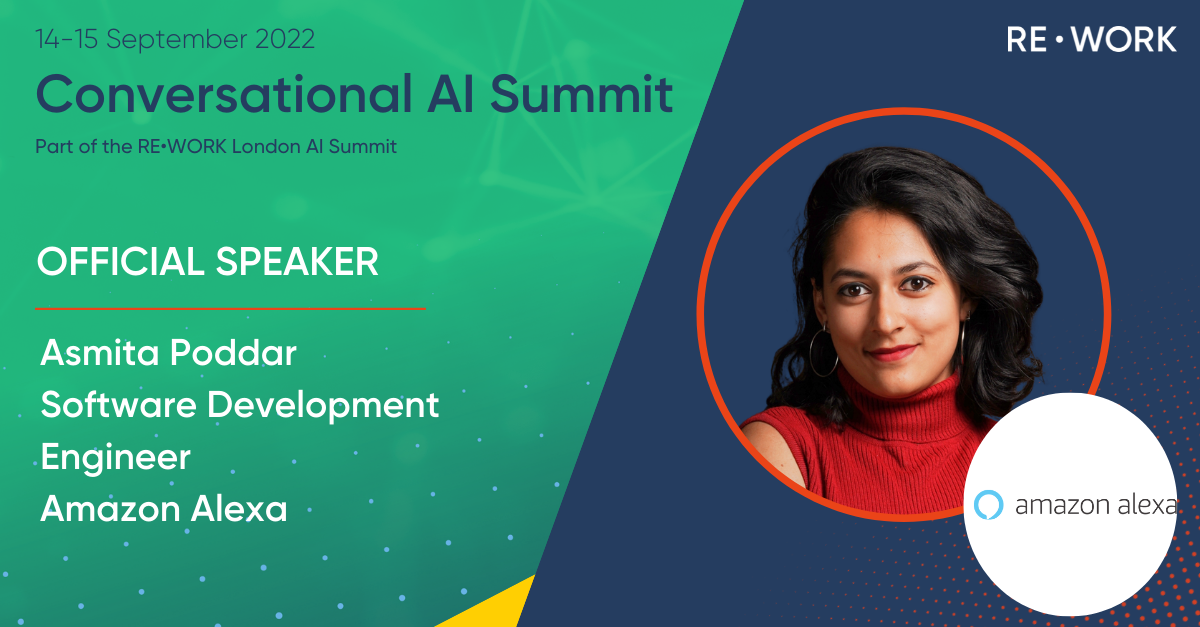We caught up with experts in the RE•WORK community to find out what the top 17 AI papers are for 2022 so far that you can add to your Summer must reads. The papers cover a wide range of topics including AI in social media and how AI can benefit humanity and are free to access.
Interested in learning more? Check out all the upcoming RE•WORK events to find out about the latest trends and industry updates in AI here.
Max Li, Staff Data Scientist – Tech Lead at Wish
Max is a Staff Data Scientist at Wish where he focuses on experimentation (A/B testing) and machine learning. His passion is to empower data-driven decision-making through the rigorous use of data. View Max’s presentation, ‘Assign Experiment Variants at Scale in A/B Tests’, from our Deep Learning Summit in February 2022 here.
1. Boostrapped Meta-Learning (2022) – Sebastian Flennerhag et al.
The first paper selected by Max proposes an algorithm in which allows the meta-learner teach itself, allowing to overcome the meta-optimisation challenge. The algorithm focuses meta-learning with gradients, which guarantees improvements in performance. The paper also looks at how bootstrapping opens up possibilities. Read the full paper here.
2. Multi-Objective Bayesian Optimization over High-Dimensional Search Spaces (2022) – Samuel Daulton et al.
Another paper selected by Max proposes MORBO, a scalable method for multiple-objective BO as it performs better than that of high-dimensional search spaces. MORBO significantly improves the sample efficiency, and where BO algorithms fail, MORBO provides improved sample efficiencies to the current BO approach used. Read the full paper here.
3. Tabular Data: Deep Learning is Not All You Need (2021) – Ravid Shwartz-Ziv, Amitai Armon
To solve real-life data science problems, selecting the right model to use is crucial. This final paper selected by Max explores whether deep models should be recommended as an option for tabular data. Read the full paper here.

Jigyasa Grover, Senior Machine Learning Engineer at Twitter
Jigyasa Grover is a Senior Machine Learning Engineer at Twitter working in the performance ads ranking domain. Recently, she was honoured with the 'Outstanding in AI: Young Role Model Award' by Women in AI across North America. She is one of the few ML Google Developer Experts globally. Jigyasa has previously presented at our Deep Learning Summit and MLOps event in San Fransisco earlier this year.
4. Privacy for Free: How does Dataset Condensation Help Privacy? (2022) – Tian Dong et al.
Jigyasa’s first recommendation concentrates on Privacy Preserving Machine Learning, specifically mitigating the leakage of sensitive data in Machine Learning. The paper provides one of the first propositions of using dataset condensation techniques to preserve the data efficiency during model training and furnish membership privacy. This paper was published by Sony AI and won the Outstanding Paper Award at ICML 2022. Read the full paper here.
5. Affective Signals in a Social Media Recommender System (2022) – Jane Dwivedi-Yu et al.
The second paper recommended by Jigyasa talks about operationalising Affective Computing, also known as Emotional AI, for an improved personalised feed on social media. The paper discusses the design of an affective taxonomy customised to user needs on social media. It further lays out the curation of suitable training data by combining engagement data and data from a human-labelling task to enable the identification of the affective response a user might exhibit for a particular post. Read the full paper here.
6. ItemSage: Learning Product Embeddings for Shopping Recommendations at Pinterest (2022) – Paul Baltescu et al.
Jigyasa’s last recommendation is a paper by Pinterest that illustrates the aggregation of both textual and visual information to build a unified set of product embeddings to enhance recommendation results on e-commerce websites. By applying multi-task learning, the proposed embeddings can optimise for multiple engagement types and ensures that the shopping recommendation stack is efficient with respect to all objectives. Read the full article here.
Asmita Poddar, Software Development Engineer at Amazon Alexa
Asmita is a Software Development Engineer at Amazon Alexa, where she works on developing and productionising natural language processing and speech models. Asmita also has prior experience in applying machine learning in diverse domains. Asmita will be presenting at our London AI Summit, in September, where she will discuss AI for Spoken Communication.
7. Competition-Level Code Generation with AlphaCode (2022) – Yujia Li et al.
Systems can help programmers become more productive. Asmita has selected this paper which addresses the problems with incorporating innovations in AI into these systems. AlphaCode is a system that creates solutions for problems that requires deeper reasoning. Read the full paper here.
8. A Commonsense Knowledge Enhanced Network with Retrospective Loss for Emotion Recognition in Spoken Dialog (2022) – Yunhe Xie et al.
There are limits to model’s reasoning in regards to the existing ERSD datasets. The final paper selected by Asmita proposes a Commonsense Knowledge Enhanced Network with a backward-looking loss to perform dialog modelling, external knowledge integration and historical state retrospect. The model used has been shown to outperform other models. Read the full paper here.

Discover the speakers we have lined up and the topics we will cover at the London AI Summit.
Sergei Bobrovskyi, Expert in Anomaly Detection for Root Cause Analysis at Airbus
Dr. Sergei Bobrovskyi is a Data Scientist within the Analytics Accelerator team of the Airbus Digital Transformation Office. His work focuses on applications of AI for anomaly detection in time series, spanning various use-cases across Airbus. Sergei will be presenting at our Berlin AI Summit in October about Anomaly Detection, Root Cause Analysis and Explainability.
9. LaMDA: Language Models for Dialog Applications (2022) – Romal Thoppilan et al.
The paper chosen by Sergei describes the LaMDA system, which caused the furor this summer, when a former Google engineer claimed it has shown signs of being sentient. LaMDA is a family of large language models for dialog applications based on Transformer architecture. The interesting feature of the model is their fine-tuning with human annotated data and possibility to consult external sources. In any case, this is a very interesting model family, which we might encounter in many of the applications we use daily. Read the full paper here.
10. A Path Towards Autonomous Machine Intelligence Version 0.9.2, 2022-06-27 (2022) – Yann LeCun
The second paper chosen by Sergei provides a vision on how to progress towards general AI. The study combines a number of concepts including configurable predictive world model, behaviour driven through intrinsic motivation, and hierarchical joint embedding architectures. Read the full paper here.
11. Coordination Among Neural Modules Through a Shared Global Workpace (2022) – Anirudh Goyal et al.
This paper chosen by Sergei combines the Transformer architecture underlying most of the recent successes of deep learning with ideas from the Global Workspace Theory from cognitive sciences. This is an interesting read to broaden the understanding of why certain model architectures perform well and in which direction we might go in the future to further improve performance on challenging tasks. Read the full paper here.
12. Magnetic control of tokamak plasmas through deep reinforcement learning (2022) – Jonas Degrave et al.
Sergei chose the next paper, which asks the question of ‘how can AI research benefit humanity?’. The use of AI to enable safe, reliable and scalable deployment of fusion energy could contribute to the solution of pression problems of climate change. Sergei has said that this is an extremely interesting application of AI technology for engineering. Read the full paper here.
13. TranAd: Deep Transformer Networks for Anomaly Detection in Multivariate Time Series Data (2022) – Shreshth Tuli, Giuliano Casale and Nicholas R. Jennings
The final paper chosen by Sergei is a specialised paper applying transformer architecture to the problem of unsupervised anomaly detection in multivariate time-series. Many architectures which were successful in other fields are at some points being also applied to time-series. The paper shows an improved performance on some known data sets. Read the full paper here.

Abdullahi Adamu, Senior Software Engineer at Sony
Abdullahi has worked in various industries including working at a market research start-up where he developed models that could extract insights from human conversations about products or services. He moved to Publicis, where he became Data Engineer and Data Scientist in 2018. Abdullahi will be part of our panel discussion at the London AI Summit in September, where he will discuss Harnessing the Power of Deep Learning.
14. Self-Supervision for Learning from the Bottom Up (2022) – Alexei Efros
This paper chosen by Abdullahi makes compelling arguments for why self-supervision is the next step in the evolution of AI/ML for building more robust models. Overall, these compelling arguments justify even further why self-supervised learning is important on our journey towards more robust models that generalise better in the wild. Read the full paper here.
15. Neural Architecture Search Survey: A Hardware Perspective (2022) – Krishna Teja Chitty-Venkata and Arun K. Somani
Another paper chosen by Abdullahi understands that as we move towards edge computing and federated learning, neural architecture search that takes into account hardware constraints which will be more critical in ensuring that we have leaner neural network models that balance latency and generalisation performance. This survey gives a birds eye view of the various neural architecture search algorithms that take into account hardware constraints to design artificial neural networks that give the best tradeoff of performance and accuracy. Read the full paper here.
16. What Should Not Be Contrastive In Contrastive Learning (2021) – Tete Xiao et al.
In the paper chosen by Abdullahi highlights the underlying assumptions behind data augmentation methods and how these can be counter productive in the context of contrastive learning; for example colour augmentation whilst a downstream task is meant to differentiate colours of objects. The result reported show promising results in the wild. Overall, it presents an elegant solution to using data augmentation for contrastive learning. Read the full paper here.
17. Why do tree-based models still outperform deep learning on tabular data? (2022) – Leo Grinsztajn, Edouard Oyallon and Gael Varoquaux
The final paper selected by Abdulliah works on answering the question of why deep learning models still find it hard to compete on tabular data compared to tree-based models. It is shown that MLP-like architectures are more sensitive to uninformative features in data, compared to their tree-based counterparts. Read the full paper here.
Sign up to the RE•WORK monthly newsletter for the latest AI news, trends and events.
Join us at our upcoming events this year:
· London AI Summit – 14-15 September 2022
· Berlin AI Summit – 4-5 October 2022
· AI in Healthcare Summit Boston – 13-14 October 2022
· Sydney Deep Learning and Enterprise AI Summits – 17-18 October 2022
· MLOps Summit – 9-10 November 2022
